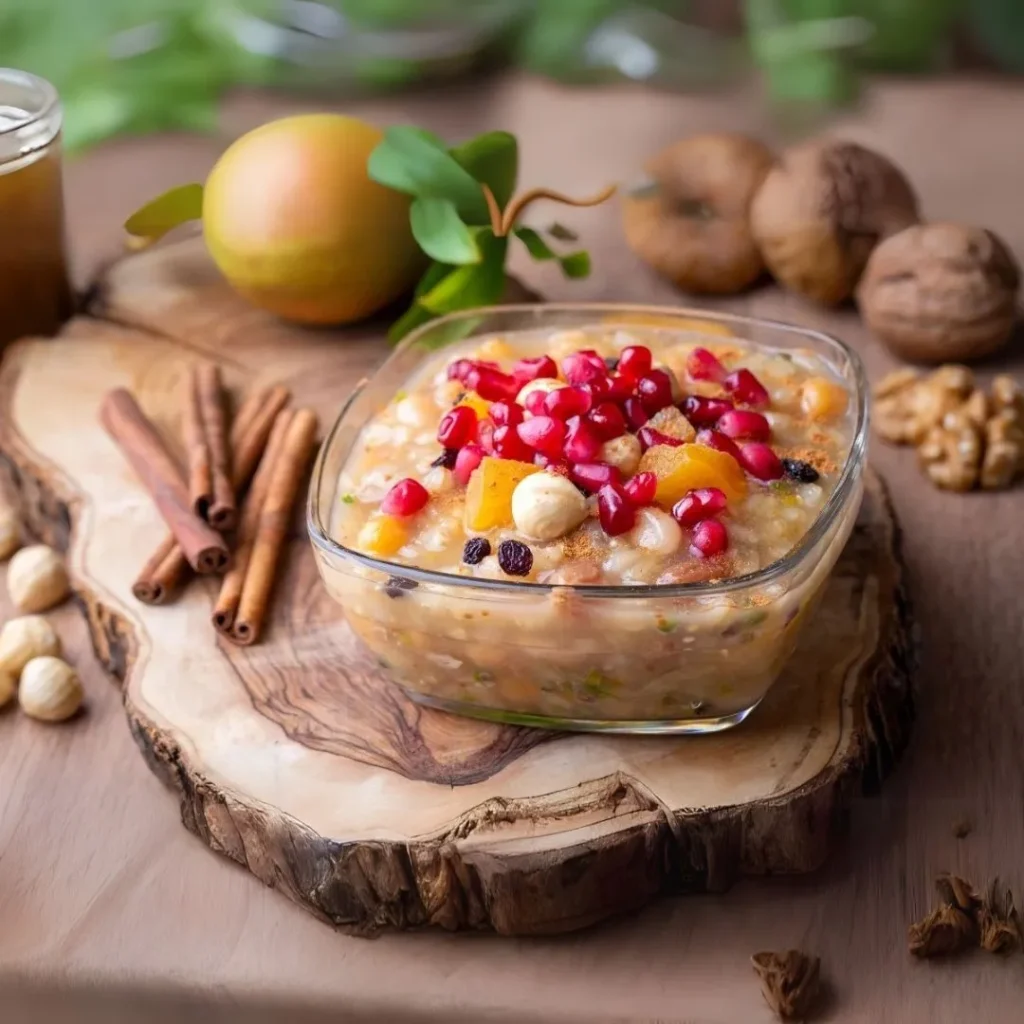Ashure: A Taste of Turkish Tradition and History
A Dessert Rich in History
Ashure, also known as “Noah’s Pudding,” is a beloved Turkish dessert with deep cultural and historical roots. Seen as a symbol of unity and sharing, this dessert has been part of Turkish culinary heritage for centuries, embodying a sense of community and generosity.
Legend says Ashure dates back to the story of Noah’s Ark. When the Ark landed on Mount Ararat, Noah and his family combined their remaining grains, fruits, and nuts to create this hearty dish. Since then, Ashure has been associated with abundance and gratitude.
In Turkish culture, families traditionally prepare Ashure during the Islamic month of Muharram, particularly on the 10th day, known as Ashura. They cook large batches of this dessert and share it with neighbors, friends, and those in need, fostering bonds of friendship and kindness.
Ingredients That Tell a Story
Ashure’s ingredients reflect Turkey’s diverse agricultural wealth. This dessert is a vibrant mix of grains, legumes, and dried fruits like wheat, chickpeas, beans, raisins, apricots, and figs. It’s sweetened with sugar or honey and garnished with pomegranate seeds, walnuts, hazelnuts, and spices like cinnamon.
Each ingredient carries symbolic meanings. For example, pomegranate seeds represent abundance and prosperity, while nuts symbolize strength and health. The combination of these elements mirrors the unity found in diversity—a central theme in Turkish culture.
The Cultural Significance of Ashure
Beyond its delicious taste, Ashure holds a special place in Turkish households. Sharing Ashure is considered a virtuous act, bringing blessings to the giver and fostering goodwill. Turkish families often distribute bowls of Ashure to neighbors and friends, regardless of their faith or background.
This dessert also serves as a reminder of the importance of gratitude and resourcefulness, values deeply rooted in Turkish traditions.
Preserving a Timeless Tradition
Today, Ashure remains a popular dessert, enjoyed in homes, restaurants, and cultural festivals across Turkey. It represents a connection to the past while continuing to bring people together in the present. Preparing and sharing Ashure is a heartfelt way to celebrate Turkish heritage and promote the timeless values of unity, sharing, and gratitude.
Whether you enjoy it for its unique taste or its rich cultural significance, Ashure is more than just a dessert—it’s a story of resilience, community, and tradition passed down through generations.
Discover Traditional Turkish Recipes Discover Traditional Recipes from Europe
Turkish Ashure
Ingredients
Instructions
-
First, let's boil the chickpeas and beans separately.
-
Let's wash the wheat, put it in a pot, add boiling water and boil it for 10 minutes. Let's strain the yellow water that comes out. Let's do the same process once more and strain the water.
-
Then let's add 2 liters of water and boil the wheat for 50 minutes. (If you wish, you can boil it twice in the evening, strain the water and then wait in hot water until morning. If you soak it in the evening, boiling it for 15 minutes will be enough.)
-
Let's chop the dried apricots and dried figs into small pieces.
-
Then let's put these chopped fruits and raisins in a large bowl, add hot water and wait.
-
Do not forget to add hot water when necessary. Let's add a little more hot water to the wheat whose water has decreased.
-
Add washed rice, cooked chickpeas, boiled beans, finely chopped apricots, figs and raisins to the wheat that has been boiled for about 50 minutes and softened, after draining the water, and boil for about 15 minutes.
-
Take cloves into a small coffee pot, add water and let it boil for about 10 minutes.
-
In the meantime, add hot water to the wheat that has reduced its water.
-
Finally, add the clove water that we have strained, hazelnuts, hot milk, sugar, optional salt and black pepper, mix and boil for about 15-20 minutes more.
-
Divide the aşure that we have prepared into individual glass bowls. We obtained 15 bowls of aşure with these measurements.
-
When the aşure starts to cool in the bowls, you can decorate it with hazelnuts, walnuts, peanuts, currants, raisins and pomegranate seeds. Enjoy.
-
Your Traditional Ashure is ready. Afiyet Olsun!











